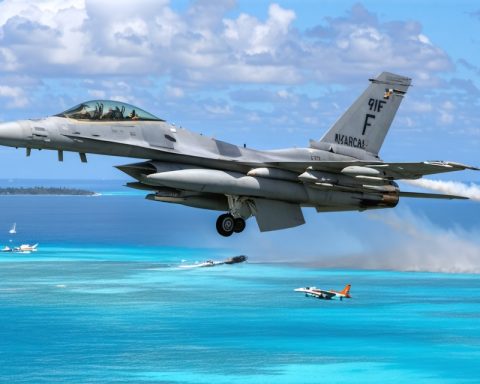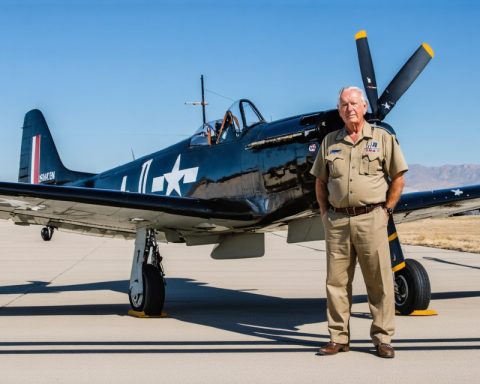- Comac’s C949 jet aims to revolutionize supersonic travel, boasting speeds over 1,200 mph and a range of 6,800 miles, surpassing the Concorde.
- The C949 is designed to produce significantly less noise, with a sonic boom as quiet as a hairdryer, potentially opening new overland flight paths.
- Offering seating for 168 passengers, the C949 combines luxury with practicality for mainstream routes, learning from the Concorde’s limitations.
- The C949 addresses past supersonic challenges—high costs and noise pollution—aiming for operational efficiency and renewed public interest.
- Amid a global drive to perfect supersonic designs, China’s Aero Engine Corporation is developing a hypersonic prototype, Nanqiang No 1.
- Industry leaders like NASA and Lockheed Martin are preparing to test their own supersonic aircraft, signaling a new era in aviation.
China is setting the aerospace world abuzz with its ambitious plans for a new era in supersonic travel. The state-owned firm, Comac, has revealed designs that push the boundaries of speed and comfort with its proposed C949 jet. This next-generation aircraft promises to soar through the skies at over 1,200 mph, delivering travel experiences that echo the glamour of the Concorde but with significant modern advantages.
Visualize an aircraft slicing through the air like a silent arrow. The C949 aims to achieve this with a travel range of 6,800 miles, far surpassing the Concorde’s 4,500-mile limit. It promises a journey less disturbed by the deafening noise that once plagued the supersonic marvels of the past. Engineers at Comac propose a sonic boom whisper as gentle as a hairdryer, reducing noise levels to just one-twentieth of Concorde’s ground-shaking roars—a feat that could finally unlock overland flight paths previously restricted due to noise complaints.
The design of the C949 is shaping up to be as groundbreaking as its engineering. With a seating capacity for 168 passengers, the jet positions itself not only as a luxury experience but also as a practical solution for mainstream routes. This design cleverly leverages the lessons of the Concorde, providing more space and accessibility in contrast to the more exclusive market targeted by its Western competitors like Boom Technology’s XB-1, which recently marked its place in aviation history with its maiden flight.
The failure of the Concorde was a tapestry woven from economic challenges, tragic incidents, and evolving passenger needs. Comac acknowledges these hurdles and tailors the C949 to overcome the ghosts of its predecessors. By focusing on minimizing operational costs and noise pollution, they aim to reignite the public’s love for supersonic travel without the pitfalls of the past.
Aviation is on the cusp of a supersonic renaissance. As companies from around the globe race to perfect their designs, Comac’s C949 stands out in its bid to reintegrate supersonic travel into the commercial landscape. Meanwhile, the intrigue doesn’t stop at supersonic speeds. China’s Aero Engine Corporation is ambitiously crafting a hypersonic prototype, Nanqiang No 1, which seeks to break even more profound speed barriers.
In the upcoming years, expect more breakthroughs as industry leaders such as NASA and Lockheed Martin prepare to test their own supersonic crafts. This whirlwind of innovation heralds the dawn of a new chapter in air travel, where time zones shrink and the world becomes smaller, faster. Keep your eyes on the sky; the future of flight looks supersonic.
China’s C949 Jet: A Game-Changer in Supersonic Travel That’s Set to Revolutionize Aviation
Introduction
The announcement of China’s C949 jet marks a pivotal moment in the journey toward making supersonic travel a reality again. The promising design by China’s Comac not only brings back the excitement of the Concorde era but also introduces refined engineering solutions to past challenges. Let’s explore additional facts, industry trends, and insights that provide a comprehensive view of this aviation breakthrough.
How-To Steps & Life Hacks: Understanding the Technology
To fully appreciate the C949’s technological advancements, it’s essential to understand the following:
1. Material Innovation: The C949 is expected to utilize advanced composite materials to enhance strength while reducing weight, thus improving fuel efficiency.
2. Aerodynamic Design: The craft’s sleek design minimizes drag, which is crucial for reaching high speeds with reduced fuel consumption.
3. Engine Technology: Incorporating quieter engines with afterburners that lessen sonic booms distinctively helps meet noise regulations, potentially allowing overland flight routes.
Real-World Use Cases
Supersonic travel will transform various aspects of global business and personal travel, offering:
– Business Efficiency: With reduced travel times, executives can fly across continents for meetings and return home the same day.
– Short-Duration Tourism: Travelers can embark on day trips to destinations previously requiring overnight stays.
– Global Shipping: The technology could later be adapted for cargo, significantly shortening international shipping times.
Market Forecast & Industry Trends
The global aerospace industry is witnessing a renewed interest in high-speed travel. Key trends to watch include:
– Increased Investment: Companies are investing heavily in research and development to surmount technical and regulatory challenges.
– Emergence of New Players: Alongside Comac, companies like Boom Technology and Lockheed Martin are shaping the competitive landscape.
– Environmental Concerns: New technologies aim to balance speed with sustainability, focusing on reducing emissions and noise.
C949 Jet: Features, Specs & Pricing
– Speed: Over 1,200 mph, surpassing the Concorde’s 1,354 mph.
– Range: Capable of 6,800 miles, offering practical transcontinental travel without refueling.
– Capacity: Accommodates 168 passengers, addressing both luxury and practical needs.
– Pricing: While official pricing is unannounced, it will likely target both commercial airlines and luxury carriers seeking to diversify their fleet offerings.
Pros & Cons Overview
Pros:
– Significant reduction in travel time.
– Enhanced passenger capacity compared to earlier models.
– Quieter operations possibly opening more flight paths globally.
Cons:
– Potentially high operational and ticket costs.
– Regulatory hurdles and infrastructure needs at airports.
– Environmental impact and sustainability issues.
Insights & Predictions
Experts predict that as technology evolves, supersonic travel may become part of mainstream aviation. Although initially targeted at premium markets, technological advancements and economies of scale could make it more accessible.
Actionable Recommendations
– For Airlines: Consider investment in supersonic fleets to position as a pioneer in next-gen travel.
– For Travelers: Monitor developments for opportunities in ultra-fast travel destinations.
– For Innovators: Explore partnerships and collaborations to address regulatory and environmental challenges.
For further exploration of this exciting development, visit the Comac official site.
Conclusion
The C949 jet represents a bold step forward for supersonic aviation, emphasizing speed, luxury, and practicality. As this project takes off, it signals a future where the sky isn’t the limit but a new beginning. Keep an eye on these developments, as the supersonic age is poised to reshape our world.










